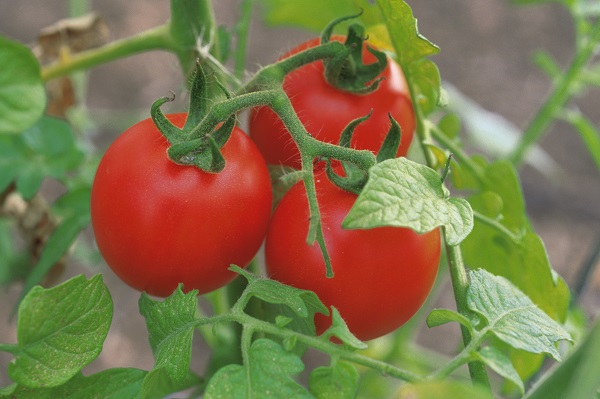
This is the title of a book of instructions that the authors say, if followed, will ensure the production of “juicy tasty tomatoes.” As with most books and articles on tomato growing, the primary focus is on the cultural aspects, such as variety selection, soil preparation and fertilization, planting method, insect and disease control, and a listing of those procedures required to keep the plant is a fruit productive mode. All are essential, but these are not the primary determining factors for the production of “juicy tasty tomatoes.” It is the site characteristics and weather conditions during fruiting that trump them all.
The site characteristics are the physical and chemical properties of the soil and solar radiation. The “ideal” soil for tomatoes is a well-drained deep loamy textured soil whose pH is between 6.4 and 6.8, and whose elemental status would be classed as “sufficient” by soil testing standards. It is the residual fertility status of the soil that is important, having been maintained by consistent liming and fertilization with use over time. Applying compost, or some other form of organic material to alter the physical and chemical properties of the soil, may be helpful, primarily for those soils that are sandy in texture or that are high in clay content. However, high organic matter content soils, and/or surface mulching, will keep the soil cool and wet, not desirable conditions for optimum tomato root growth.
The site should be such that the tomato plant receives full morning sun, and for those high radiation regions, partially shaded from afternoon sun. Cloud cover can be a factor during periods of high radiation, even when it is partial, for it will reduce high radiation exposure that can impact fruit yield. High radiation exposure is the major cause for the fruit disorders, green shoulders and sun scald.
When the tomato plant is setting fruit, air temperature, wind and rainfall frequency and amount, will affect the number of fruit set, fruit size and quality. Periods of high or low air temperatures will result in blossom abortion and poor pollination. The tomato plant does not grow well in stagnant humid air, or when exposed to windy hot dry air. Water movement within the plant is determined by the transpiration rate from leaf surfaces, when low, resulting in nutrient element stress, and when high, plants can wilt.
Minimizing periods of either water excess or insufficiency by irrigation is not easily done when rainfall is inconsistent in frequency and amount. Keeping the soil moist, but not wet, is the goal in order to ensure steady fruit development without the occurrence of fruit disorders, such as blossom-end-rot (BER), cracking, and catfacing. Selecting a deep profile soil that easily drains is one way to minimize the potential for the occurrence of moisture stress.
It is the cycling of weather events as well as extended periods of extremes that will impact vegetative growth and fruit set and development. The tomato plant does not function well when there are sudden changes in weather conditions. Current weather conditions have minimal impact on matured fruit ready to harvest but will impact developing fruit that will be maturing in 2 to 3 weeks. If there are fruit disorders in mature fruit, look back to see what the weather conditions were 2 to 3 weeks earlier.
If you were disappointed with this season’s tomato fruit yield and quality, go back through the local weather records and look for the occurrences of extremes and the frequency of sudden changes. Before looking through the tomato seed catalog and making plans for your next tomato crop, be sure that the site you are planning to use is best suited based on its characteristics and how best to cope with weather extremes when they occur.
J. Benton Jones, Jr. has a PhD in Agronomy and is the author of several books. Dr. Jones has written extensively on hydroponic growing and outdoor vegetable gardening employing sub-irrigation hydroponic growing systems.
Related Articles & Free Email Newsletter
Common Greenhouse Diseases & Controls
Popular and Easy Hydroponic Plants




Comment here